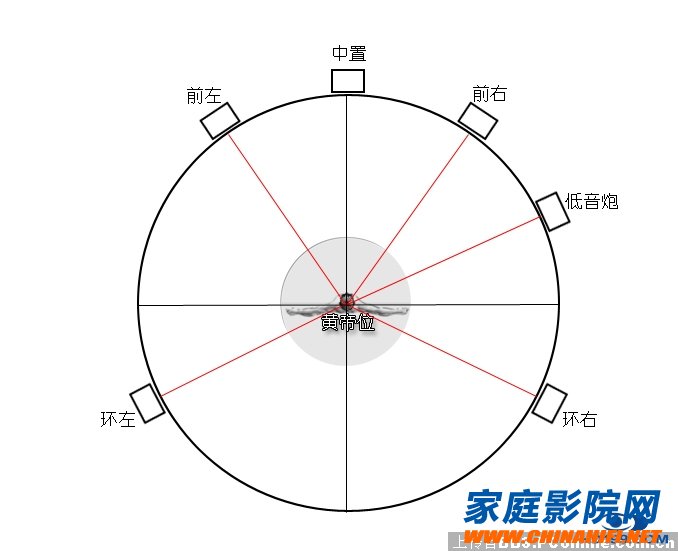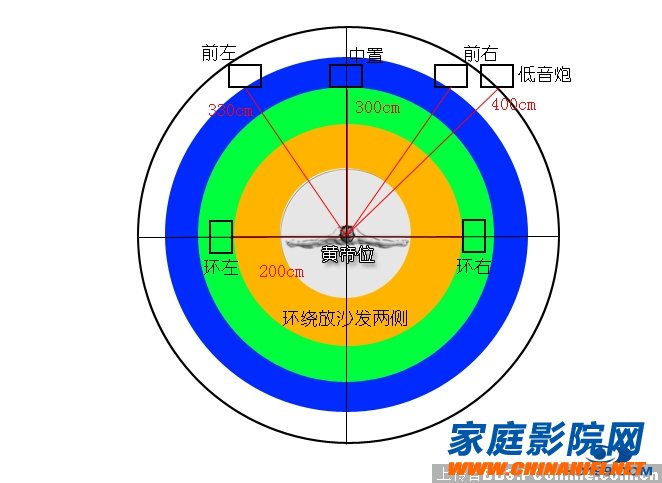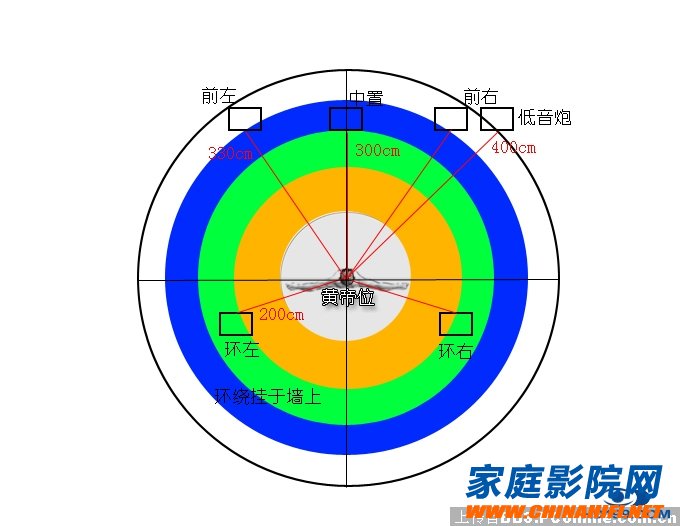I went to a friend's house two days ago and found that my friend's AV multi-channel home theater audio system setting was very problematic and was not set to the best state. Because the listening environment also has more than 30 squares, it feels very obvious, the sound is a bit messy, not in place. I believe that many AV enthusiasts will put six speakers in the hands and put them in the system. After connecting the amplifier speaker cable, they will feel the cinema effect. If the quality of the system is not bad, the effect should not be basically bad, but it may not be the best. Now many high-end amplifiers have a microphone radio automatic adjustment function, as long as the amplifier is automatically set up. However, due to a number of factors, such as the environmental noise during the system's radio setting, some factors will be imperfect. So what should we do to optimize the system? First of all, according to your room layout pattern, try to meet the speaker placement standard of surround sound, that is, the position of the 6-channel speaker is equal to the distance of the listening position. I believe that in addition to the special audio-visual room, the average family is very Difficult to do. Standard multi-channel home theater placement: General family layout: The above two layouts are the most common methods used by the average family. We can see that the distance between the main speakers, center, surround, and subwoofers of the two methods is different. This will cause the following problems: 1. Volume imbalance of each channel sound 2. The time when each channel sound propagates to the listening position is inconsistent With the above two problems, we have to adjust the volume and delay of each channel of the amplifier. Channel volume adjustment is relatively simple, but the delay does not necessarily understand. First, let's explain the speed of sound propagation. Everyone should know that the speed of sound is 340 m / s. The speed of the sound will change with the air temperature and air pressure, and the wavelength of the sound will be different in different frequency bands. We will ignore this. It is. Delay settings in amplifiers, DVDs, and multichannel AC3/DTS decoders are typically used: CM, FEET, MS (cm, feet, milliseconds), if we follow the layout of the two most common home layouts Set the channel delay, then how should we set it? Is it true that many friends will find it very simple, how many people are set according to the following? Main speakers left and right: 330 cm Center: 300 cm Surrounded by left and right: 200 cm Subwoofer: 400 cm The above setting is wrong. In fact, the delay setting in DVD and amplifier is not to let you set the distance from each channel to the listening position, but you need to set the delay distance, don't misunderstand. It should be set up such that the farthest distance is set to 0cm, that is, there is no delay. According to the above data, we can see that the subwoofer is the farthest away from us, it is 400cm, so we set the subwoofer to 0cm delay, with reference to it, and then set the delay of other channels: Subwoofer: 0 cm Main speakers left and right: 70 cm Center: 100 cm Surrounded by left and right: 200 cm This setting is correct. We use the farthest reference as a reference, and then subtract 400 from the relative distance to get a segment that requires delay. For example, in an explosion picture, the subwoofer and the main speaker and the center are all making sounds. If we don't set the delay, we should first hear the channel of our position, that is, the center, then to the main The speaker, and finally the subwoofer, in this case, the sound becomes chaotic. We first hear "唪" and then hear the "bang". If we set the delay, the main speaker and the center will be delayed relative to the subwoofer. When the gun is 70cm, the main speaker will start to emit the same picture. When the channel of the gun reaches 100cm, the center will be At the same time, they made a sound, and at this time they had spread the sound to our ears at the same distance. What we heard was a clean, loud and loud explosion. Therefore, the greater the delay setting, the greater the effect of the listening range, especially the surrounding inertia. In addition to using the same configuration of the speaker, there is a great relationship to the delay setting. The delay data must be properly set so that the best cinema effect can be achieved. Above we talked about the delay setting. Many delay settings for Japanese amplifiers or DVDs are in ft (feet) and some in in (inches). This unit we may use less, in fact, is also a unit of length, the length conversion between them is: 1 ft = 12 in 1 ft = 30.48 cm 1 in = 2.54 cm With this conversion, we can set the delay unit: Subwoofer: 0 ft Main speakers left and right: 2.3 ft Center: 3.3 ft Surrounded by left and right: 6.6 ft Of course, the accuracy of the ft unit is not as high as the cm unit. Then there is the unit standard ms (milliseconds) that is commonly used in Europe and America. This unit is commonly used in many imported amplifiers or DVDs, but some domestic machines use imported chips, so the settings are similar and the units are the same. Ms is a more direct unit. We have already talked about the speed of sound transmission is 340 m / S, 1 second = 1000 msec, then we can get the sound propagation speed is: 34cm / ms. Friends of the ms unit can be set like this: Subwoofer: 0 ms Main speakers left and right: 2 ms Center: 3 ms Surround left and right: 6 ms In addition to the delay setting function of each channel, some amplifiers also have a delay setting for synchronizing the picture with the sound. This is very useful. When your listening environment is very large, because the speed of the sound is transmitted, the picture and the sound will be out of sync. At this time, we can advance the sound in advance, and note that it is not delayed in advance. For example, in the above case, we use the subwoofer as the delay reference. In fact, in the distance of 400cm, the difference between the picture and the sound has a delay of about 12ms, that is, you will hear the explosion sound after seeing the explosion screen for 12ms. At this time, if your amplifier has this setting function, you can set the screen and sound synchronization to -12ms, that is, the sound occurs before the screen 12ms. When the sound spreads to our ears, just the picture is produced synchronously. At the same time, we know that the current movie format is 24 frames/s, and some operating movies reach 30 frames/s, and the time between each frame is: 1000 milliseconds/30 frames, about 33ms/frame (each frame) ). In other words, in our general listening room to see the 30 frames / sec picture, the delay may be negligible, unless your listening distance is more than 11 meters, will produce a frame delay. Therefore, in many low-end power amplifiers, there is no function of picture and sound delay, and there is no need to care. More home theater knowledge is available at CNHIFI Home Theater (). Impedance Control Pcb,Impedance Board Circuit Board,Impedance Control Board Circuit Board,Impedance Control Board Shenzheng Weifu Circuit Technology Co.Ld , https://www.wfcircuit.com

